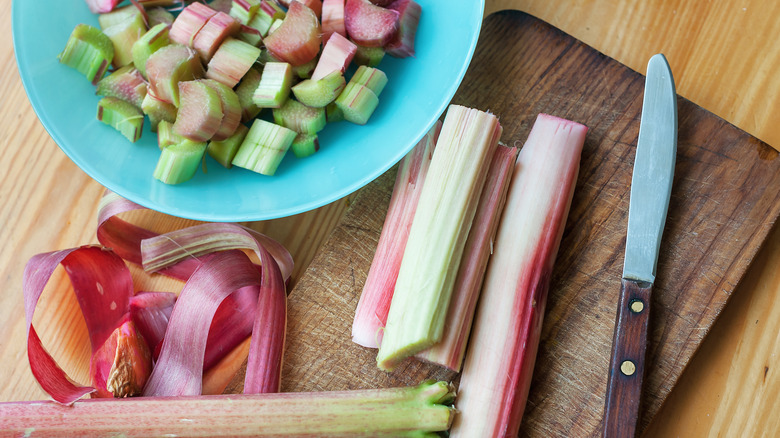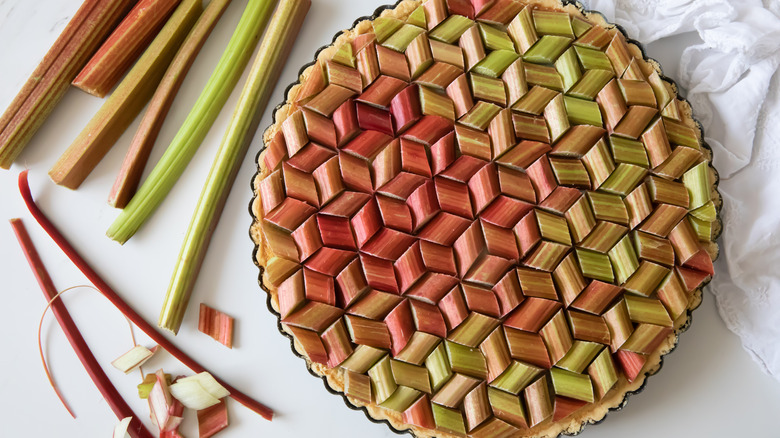Say Goodbye To Rubbery Rhubarb With Marcus Samuelsson's Foolproof Trick
Chef Marcus Samuelsson began his food journey while growing up in Sweden and learning the basics of cooking and baking from his grandmother. Many of those dishes likely involved rhubarb since the plants thrive in cooler areas of temperate zones, and are frequently used in Swedish cuisine. That's why it's no surprise that tips for preparing and cooking with rhubarb would come from a world-renowned chef who spent his formative years in Sweden.
To harness the delicious qualities of this unique plant, Samuelsson recommends peeling the outside layer from the stalk before cooking rhubarb. Upon removing that first fibrous coating, you eliminate the rubbery quality rhubarb can sometimes take on during preparation, and really allow the true beauty of the ingredient to shine. Depending on the tartness of the rhubarb or how you plan to use it, Chef Samuelsson suggested to Food&Wine, "You want to peel off the first layer, and then you want to simmer it with some brown sugar and ginger. Once you let it simmer, and it's soft, let it sit overnight. Now you have these tender ribbons that you can jar up, or you can put them on anything."
Why it is important to peel rhubarb
Home cooks don't hesitate for a moment when it comes to peeling carrots before slicing or grating them for use in a recipe. Chefs often use a vegetable peeler to remove the outer layer from a stalk of celery or an asparagus spear. This same instinct can and should be applied to rhubarb since there is a fibrous exterior to rhubarb stalks is similar to what we can see on these other vegetables. Removing this outer layer can reduce the toughness, stringiness, or the perception of a rubbery texture when the rhubarb is cooked.
It is also important to note the texture of rhubarb can change throughout the growing season, increasing the need to peel as the warmer summer months approach. As the growing season progresses, the stalks will become tougher and tougher. Early-season specimens can maybe avoid being peeled, but once the summer really gets underway, it becomes pretty necessary to strip away the fibrous outer skin.
Chef-approved ways to use rhubarb
Now that you know Marcus Samuelsson's tip for the best way to prepare rhubarb for cooking, you will soon find countless ways to use it in recipes. It is one of the first items of fresh produce to pop up in the spring and the prolific plants produce in abundance for several months. In fact, certain kinds of rhubarb grow so fast that you can actually hear it growing!
If you find yourself in possession of a bumper crop of rhubarb, there are countless ways to use it. Rhubarb is wonderful when incorporated into desserts, and strawberry rhubarb pie is the classic sweet-tart combination that many know and love. However, don't discount its use in savory dishes as well. The tangy quality of rhubarb is highlighted in this unique spring rhubarb barbecue sauce. Of course, you can also preserve rhubarb in a jar and enjoy it year-round by making rhubarb jam.



